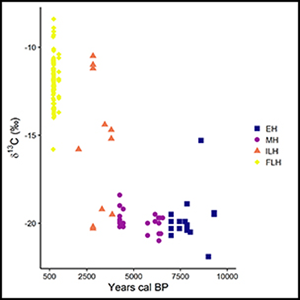Article contents
Patterns of dietary diversity in Holocene north-west South America: new insights from Bayesian stable isotope mixing models
Published online by Cambridge University Press: 17 May 2021
Abstract

For two decades, stable isotope studies have documented palaeodietary transitions in the Sabana de Bogotá region of north-west South America. Using traditional and Bayesian stable isotope mixing models, this article investigates the contribution of different resources to Holocene human diets. Temporal patterns include dietary emphases on plants during the Early and Middle Holocene, on maize horticulture through the initial Late Holocene and on maize/tuber agriculture during the final Late Holocene; animal protein apparently contributed little across all periods. These results suggest that the management and selection of diverse plants occurred early, and the later emphasis on maize raises universal questions about the role of agriculture in cultural change and social differentiation.
Information
- Type
- Research Article
- Information
- Copyright
- Copyright © The Author(s), 2021. Published by Cambridge University Press on behalf of Antiquity Publications Ltd.
References
- 7
- Cited by

